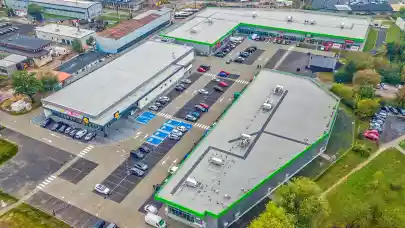
The COVID-19 pandemic has left hardly any business or industry untouched and retail real estate industry has also been affected. The last twelve months were marked by three lockdowns that helped change the shopping habits of Poles, lower developer activity, and increase the popularity of smaller retail formats, JLL analysts say.
The period of lockdown is now behind us, however, the new normal is far from stable and our daily lives continue to be restricted. Nevertheless, the unemployment rate in Poland has remained constant at 6.1% for four months and the retail sales have been gradually recovering, with positive y-o-y results recorded since July.
After seven weeks of lockdown, large-scale retail facilities (GLA > 2,000 sqm) were reopened on May 4. Consequently, the share of e-commerce started to slip, confirming Poles’ positive attitude towards brick-and-mortar stores. Looking back at the beginning of the year, the share of e-commerce is now close to the pre-COVID level.
Supply
Shopping centre density in major Polish agglomerations fell slightly, to 539 sqm of GLA per 1,000 inhabitants at the end of Q3. Poznań and Wrocław remain the most saturated markets with densities of approximately 700 sqm per 1,000 residents. As expected, the pandemic had an impact on vacancy rates all across Poland. In eight major metropolitan areas, the rate increased from 4.4% in H2 2019 to 5.3% in August 2020.
The highest vacancy rates are found in Poznań (8.1%) and Kraków (6.2%). When comparing to previous results, drops of vacancy rates were recorded in Łódź and Kraków, resulting mostly from stock withdrawals (the Sukcesja and Galeria Plaza shopping centres). Units temporarily closed have not been included in statistics.
In addition to standard retail formats, mixed-use projects are marking their position on the retail map. In Q3 2020, The Warsaw HUB by Ghelamco was opened, offering 4,800 sqm of retail space. The project has a total usable area of 113,000 sqm with a dominant office component and will soon welcome the first guest to its two hotels.
Demand & Trends
Despite the difficult times, four international brands entered the Polish retail market in Q3 2020: the most awaited Primark in Galeria Młociny, Courir in Galeria Krakowska (which is back to Poland after a short absence), Falconeri in Galeria Mokotów, and the Russian “hard discount” MERE in Częstochowa.
Interestingly, Modivo, the Polish premium fashion multi-brand of CCC Group, decided to open its first stationary shop in Galeria Młociny in July. The physical store with tablet self-service sets an essential example of the brand’s presence in all available distribution channels. Clearly, omni-channel retailing is not only about e-commerce.
It is not surprising that the extending is affecting shopping habits. The trend for conscious and discerning consumption is gaining followers, which is reflected in the increasing boom in re-commerce (product reuse). IKEA plans to open a pilot store in Sweden with second-hand furniture of the brand, while Zalando is about to launch the Zalando Pre-owned platform with second-hand clothing, also in Poland. H&M in Stockholm plans to offer consumers the option to return used clothes, which they can then transform into one new garment.
The Polish retail market, together with chain brands, tends to match the current situation and customer requirements, by creating engaged communities and locations of multi-functional use. Retailers are actively looking for innovative solutions for these troubled times, solutions that keep pace with the rapidly changing commercial environment.



